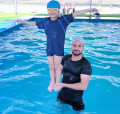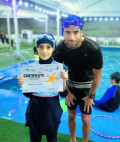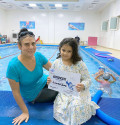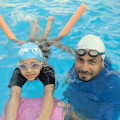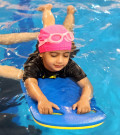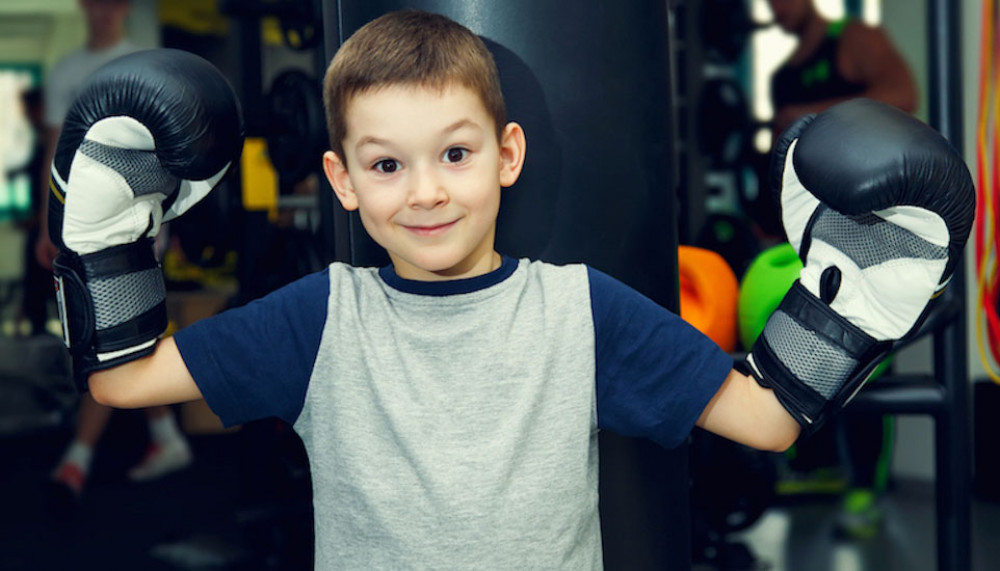
Improve Your Kids’ Physical Strength and Boost Their Self-Confidence in This Kickboxing Class!
2024-02-21 - kick-boxingIntroduction to Kickboxing for Kids
Kickboxing isn't just for adults; it's a fantastic way for kids to stay active, learn valuable skills, and boost their self-esteem. In today's age of smartphones and video games, ensuring that children get enough physical activity is crucial. Kickboxing provides an exciting alternative to traditional sports and activities, offering a myriad of benefits for young participants.
Understanding Physical Fitness for Children
In a world where childhood obesity rates are on the rise, it's more important than ever to prioritize physical fitness for kids. Engaging in regular exercise not only helps them maintain a healthy weight but also promotes overall well-being. Kickboxing involves a combination of cardiovascular exercise, strength training, and flexibility, making it a comprehensive workout for children.
Building Confidence through Kickboxing
One of the most significant advantages of kickboxing for kids is the boost in self-confidence it provides. Martial arts training empowers children by teaching them valuable self-defense skills and instilling a sense of achievement as they progress through levels of proficiency. Overcoming challenges in class builds resilience and fosters a positive self-image.
Safety Measures and Precautions
Safety is paramount in any physical activity, especially one as dynamic as kickboxing. Parents should ensure that their child's kickboxing class adheres to strict safety protocols, including the use of proper protective gear and supervision by trained instructors. By taking these precautions, parents can feel confident that their child will have a safe and enjoyable experience.
Choosing the Right Kickboxing Class
When selecting a kickboxing class for your child, it's essential to do your research. Look for reputable studios with experienced instructors who specialize in teaching children. Consider factors such as class size, atmosphere, and the curriculum offered to ensure it aligns with your child's interests and abilities.
The Curriculum of Kickboxing Classes
Kickboxing classes for kids typically cover a range of techniques, from basic punches and kicks to more advanced combinations. Instructors focus on developing proper form and technique while also incorporating fun drills and games to keep children engaged. As students progress, they have the opportunity to earn belts or other markers of achievement, providing motivation to continue learning.
Creating a Positive Environment
A supportive and encouraging environment is crucial for children to thrive in their kickboxing classes. Instructors play a vital role in fostering this atmosphere by providing constructive feedback, praising effort, and encouraging teamwork among students. By creating a sense of camaraderie, children feel motivated to push themselves and support their peers.
Setting Realistic Goals
Setting goals is an essential part of any learning process, and kickboxing is no exception. Encourage your child to set both short-term and long-term goals, whether it's mastering a particular technique or advancing to the next belt level. Tracking progress and celebrating achievements along the way reinforces the value of hard work and dedication.
Encouraging Discipline and Focus
Kickboxing requires discipline and focus, qualities that can benefit children both inside and outside the studio. By following instructions from their instructors and concentrating during drills, children learn valuable lessons in self-control and attention to detail. These skills can translate into improved academic performance and better behavior in other areas of life.
Addressing Safety Concerns
While kickboxing is generally a safe activity, injuries can still occur, especially if proper precautions are not taken. Parents should ensure that their child wears appropriate protective gear, such as gloves and shin guards, and follows the instructor's safety guidelines. Additionally, warming up before class and cooling down afterward can help prevent injuries and promote flexibility.
Benefits Beyond Physical Fitness
The benefits of kickboxing extend beyond physical fitness to include mental and emotional well-being. Regular exercise releases endorphins, chemicals in the brain that promote feelings of happiness and reduce stress. Kickboxing also teaches children valuable life skills such as perseverance, self-discipline, and respect for others.
Testimonials and Success Stories
To gain insight into the positive impact of kickboxing on children, consider reading testimonials or success stories from other parents and students. Hearing about real-life experiences can provide valuable reassurance and motivation to enroll your child in classes. Look for reviews or ask for recommendations from friends or family members who have firsthand experience with a particular studio.
Overcoming Challenges and Setbacks
Learning kickboxing, like any new skill, comes with its fair share of challenges and setbacks. Encourage your child to persevere through difficult times and remind them that progress takes time and effort. By adopting a growth mindset and embracing failure as a learning opportunity, children can develop resilience and confidence in their abilities.
Celebrating Achievements
Finally, don't forget to celebrate your child's achievements along the way. Whether it's mastering a new technique, earning a belt, or simply showing improvement, acknowledging their hard work and dedication boosts their confidence and motivates them to continue striving for excellence. Remember that progress is a journey, and every step forward is worth celebrating.
Conclusion
Enrolling your child in a kickboxing class is a fantastic way to improve their physical strength, boost their self-confidence, and instill valuable life skills.







.jpg)








































































